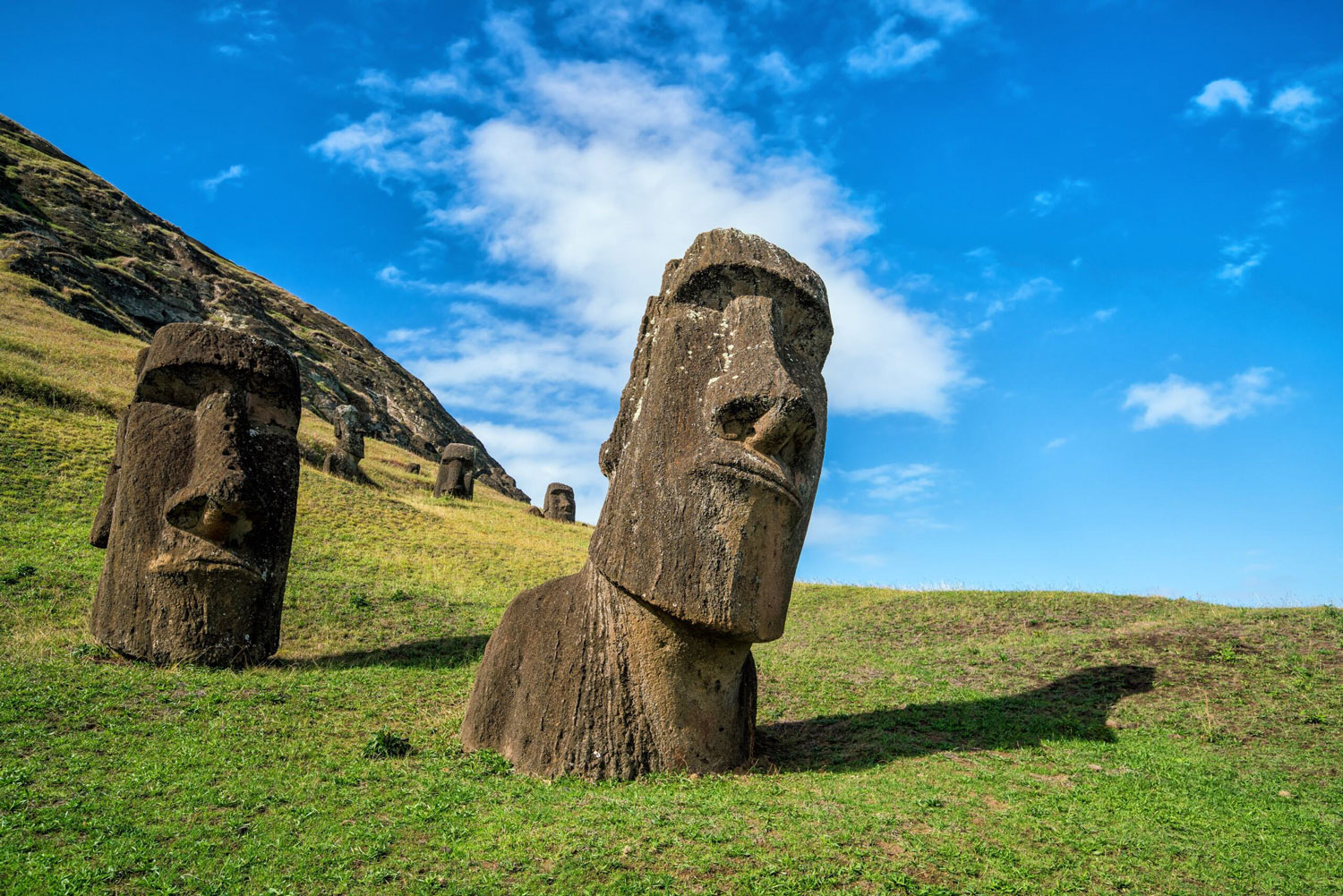
“You learn a lot when you’re barefoot. The first thing is every step you take is different.” –Michael Franti
The history of rapamycin begins on Easter Island, a remote Chilean island over 2,000 miles from the mainland of South America. Less than half the size of Galveston Island, this island has captivated the world since European explorer Captain Jacob Roggeveen stepped onto the sand only to discover 887 towering head-shaped statues, called moai. A cast of one of the sacred statues was featured in a movie, Night at the Museum, calling the protagonist “Dum-dum” and asking for “gum-gum.” This cast stands sentry at New York’s American Museum of Natural History, on the outskirts of Central Park. Easter Island houses almost 6,000 humans and 3,000 wild horses, although locals often claim they have more horses than people.
In 1964, wild horses did outnumber the island’s two-legged residents, when a team of Canadian Scientists stepped ashore. Georges Nógrády, a University of Montreal microbiologist, landed on the remote island in search of the reason the islanders did not suffer from tetanus, even though they walked barefoot. He and his team assumed there was a compound in the soil containing antibiotic or antifungal properties. He divided the island into 67 parcels and took soil samples from each. One of those 67 vials contained a bacterium able to produce a new compound they named rapamycin, in honor of the indigenous population’s name for Easter Island, “Rapa Nui.”
Rapamycin was initially used for its antifungal properties. Later, doctors used it to decrease the body’s immune responses in transplant patients to prevent rejection of organs. Now, scientists have discovered its unique ability to promote autophagy in the body. Autophagy is equivalent to a cellular recycling center; it breaks down damaged cellular components and reuses them elsewhere. This occurs when rapamycin binds with mTOR (mechanistic Target of Rapamycin), which is responsible for cellular growth. When nutrients are available, mTOR is turned on. When nutrients are unavailable, mTOR is turned off, which turns on cellular autophagy, repair, and regeneration. This crucial process does not occur until the body is in a fasting state. Because the modern American diet consists of three meals a day, with snacking in between, our bodies do not often enter autophagy. Therefore, mTOR is overexpressed, which can increase the risks of diseases such as cancer and diabetes. Rapamycin works as an mTOR inhibitor, increasing autophagy without the act of fasting.
At Physicians Preference Pharmacy, we compound sirolimus (AKA rapamycin). Our patients have reported the following benefits:
Due to its mechanism of action, sirolimus (AKA rapamycin) may be beneficial in the following conditions:
Because of the curiosity of scientists over barefoot Indigenous people, an incredible drug was formed from compounds from a small sample from a small plot on a small island in the middle of the sea. This once hidden gem now has the potential to positively affect an entire population, and all because of barefoot curiosity.
We compound sirolimus/rapamycin at Physicians Preference Pharmacy. If you are interested in more information, contact us at 281-828-9088. If you want to nerd out on the science behind it all, click HERE.
Pelton, R. (2022). Rapamycin, MTOR, autophagy & Treating MTOR syndrome: Rapamycin the Most Promising Life Extension Drug.
Rapamycin, the only drug that consistently demonstrated to increase mammalian longevity. An update